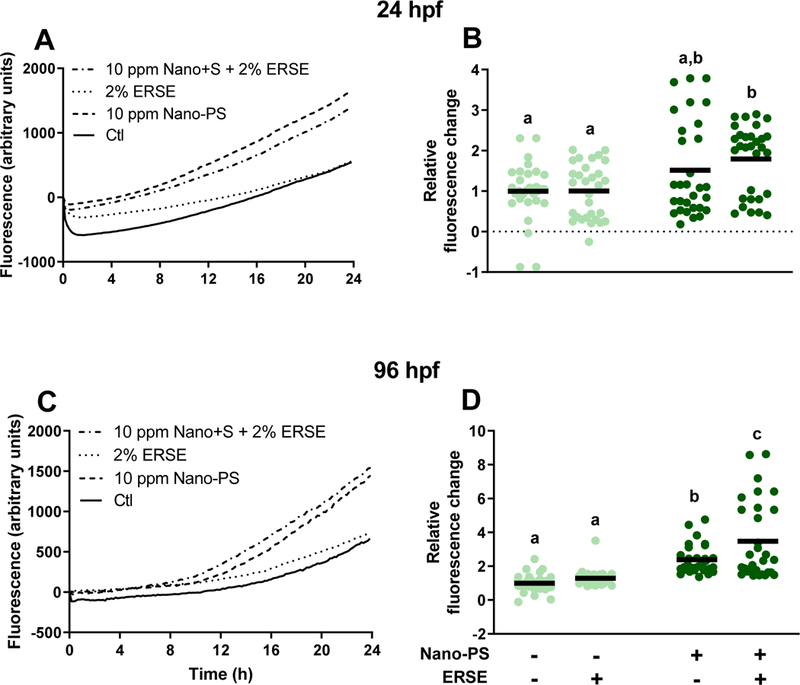Figure 6:

NADH production in zebrafish embryos or larvae exposed to 44 nm nanopolystyrene particles (Nano-PS) in the presence of a real world environmental PAH mixture (Elizabeth River Sediment Extract – ERSE). Embryos were co-exposed at 6 hours post fertilization (hpf) to 10 ppm Nano-PS and 2% ERSE. NADH production was assessed in vivo over 24 hours, starting at 24 or 96 hpf using the alamar blue assay. Changes in absolute fluorescence values are shown on the left (A and C, single representative experiment), and the relative fluorescence changes (fold change at the end of the assay, normalized by the control group) are shown on the right (B and D). Results are presented as scatter plot (n = 30) and mean (black bar). Data were analyzed by two-way ANOVA followed by Tukey’s posthoc. Groups with different letters are significantly different from each other (p < 0.05).
